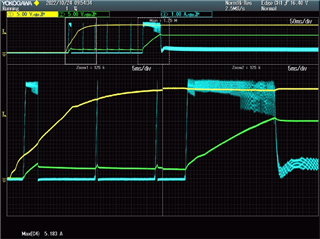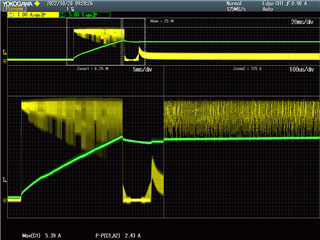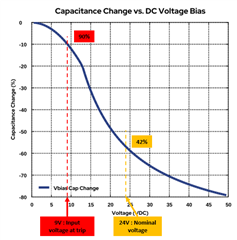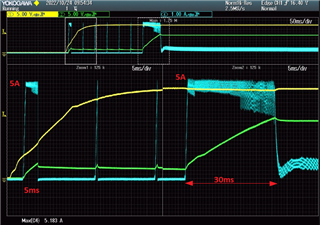Other Parts Discussed in Thread: TPS5450,
Gents,
I'm digging up this old post to follow up to new troubles.
At the time, the drops during stratup were fixed by reducing the COUT value.
Indeed the FCO, given by  , limit wasn't repected (requirements >3kHz), with L=22µH and C=390µF ==> Fco = 2315Hz.
, limit wasn't repected (requirements >3kHz), with L=22µH and C=390µF ==> Fco = 2315Hz.
By reducing Cout to 220µF ==> Fco became = 4104Hz. Experimental tests validated this solution.
Below the schematic with capacitive load connnected (corresponding to the other boards)

Since a few months, the same starting problems have reappeared, without modification of any component. Boards are now in mass production.
These start-up problems occur "randomly", depending of board used. But for a faulty board the problem occurs at 70%.
Below CH1: Vin (24V) / CH2: Vout (15V) / CH4: Lout current

I thought the problem was due to the current limitation of the TPS5430, so I tried to use a TPS5450. But Vout drop still present.
Below with the TPS5450 (Imax =7.5A)
CH1: Vin (24V) / CH2: Vout (15V) / CH4: Lout current

After lab investigations, it seems that the decoupling capacitor (front of TPS5430) have an impact regarding this trouble.
In our board design the input voltage is a +24V DCBUS, filtered with 4 alu caps (390µF/50V/40mR) and 2.2µF/50V/X7R close to the IC.
Does with capacitor repartition is OK with the datashet requirement ? See below:

So, I tried to increase the X7R capacitor value to 10µF. And yes, there is an improvement of the start-up sequence (problem occurs at 10%, instead of 70%).
But I did not see any difference in the shape of the voltage or current signals near the TPS5430...
To try to understand the phenomenon I made tests without decoupling capacitor (test by absurdity).
I you know what ? ==> No more start-up problems (100% of start-up sequences are compliant !)
So I'm a bit lost with all these tests and I need help with a new approach to understand these phenomena.
Thanks for your help, regards.






